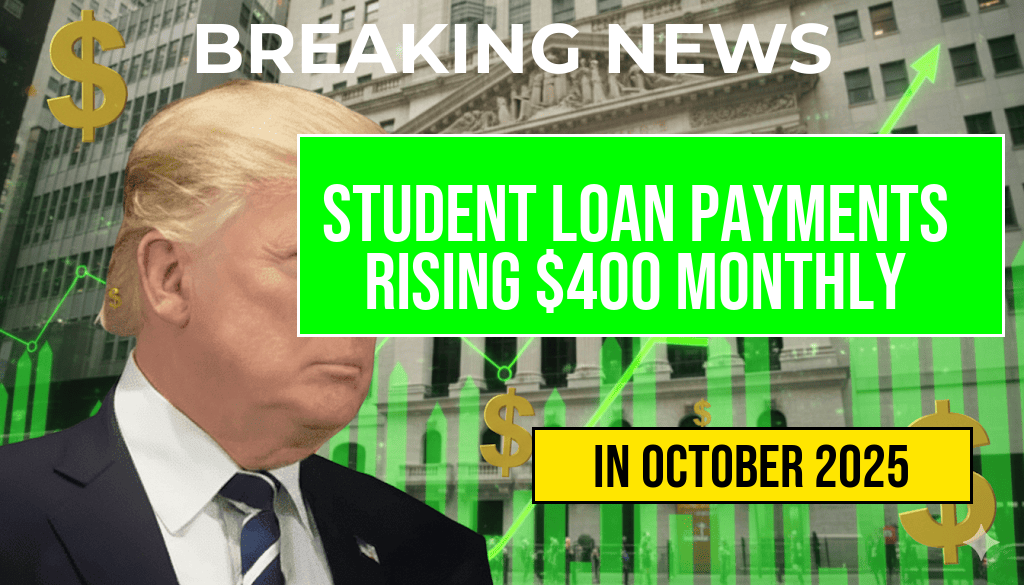The student loan crisis in the United States is set to deepen as millions of borrowers are bracing for a significant increase in their monthly repayments. Starting in the coming months, many individuals will face an average increase of $400 per month due to the resumption of federal loan payments and the expiration of various pandemic-related relief measures. This situation is particularly alarming for the nearly 43 million borrowers whose financial stability may be severely impacted. Affected individuals include those who had previously benefited from a temporary pause on payments, as well as new graduates entering the workforce. As the economic landscape evolves, understanding who will be most affected is crucial for both borrowers and policymakers alike.
Who’s Affected?
- Recent Graduates: New entrants to the job market who have just begun repaying their loans.
- Long-Term Borrowers: Individuals who have been in repayment for several years and may have relied on the previous deferment.
- Low-Income Borrowers: Those who are already struggling to make ends meet may find the increased payments untenable.
- Parents of Borrowers: Parents who took out loans on behalf of their children will also feel the financial strain.
Financial Implications
The $400 monthly payment increase represents a substantial burden for many borrowers. According to recent studies, a significant portion of the affected population lives paycheck to paycheck, making any increase in expenses potentially devastating. The Federal Reserve has reported that more than 40% of Americans do not have enough savings to cover a $400 emergency expense. With the new payment structure, these borrowers may have to make difficult choices regarding their spending and savings.
Policy Responses and Options
In light of the impending crisis, various policy responses are being discussed. Some lawmakers are advocating for additional relief measures, including:
- Student Loan Forgiveness: Proposals have been made to cancel a portion of federal student loan debt.
- Income-Driven Repayment Plans: Expanding access to flexible repayment options based on borrowers’ income.
- Interest Rate Reductions: Lowering interest rates for federal loans to ease the repayment burden.
Borrowers are encouraged to explore options available to them through the U.S. Department of Education’s Federal Student Aid website, which provides resources on managing student loan repayment. Additionally, organizations such as the National Student Loan Data System (NSLDS) offer valuable tools for tracking loans and understanding repayment strategies.
Preparing for the Changes
For those affected, preparation is key. Here are some steps borrowers can take to mitigate the financial impact:
- Budgeting: Review personal finances to create a budget that accommodates the new payment amount.
- Seeking Financial Advice: Consult with financial advisors who specialize in student debt.
- Payment Plans: Explore different repayment plans that could lower monthly payments based on income.
Conclusion
The upcoming increase in student loan payments will present new challenges for millions of borrowers across the nation. As individuals and families adapt to this financial change, it is critical to stay informed about available resources and potential policy changes. For continuous updates on the student loan crisis and its implications, consider following reputable financial news sources and governmental announcements.
For more information on student loans and repayment options, visit Federal Student Aid or check out the Forbes guide to repayment options.
Frequently Asked Questions
What is the main cause of the $400 monthly payment increase for student loans?
The increase is primarily due to the expiration of temporary relief measures that were put in place during the pandemic, leading to a return to standard repayment terms.
Who is most affected by the student loan payment increase?
Millions of borrowers will be affected, particularly those who have relied on deferred payments and are now facing significant increases in their monthly obligations.
When will the new payment amounts take effect?
The new payment amounts are expected to take effect as soon as the relief measures are officially lifted, which may be as early as the end of this year.
Are there any options available for borrowers struggling to meet the new payment amounts?
Yes, borrowers can explore options such as income-driven repayment plans, deferment, or forbearance to help manage their payments during this transition.
What should borrowers do to prepare for the upcoming payment increase?
Borrowers should assess their financial situation, create a budget that includes the new payment amounts, and consider reaching out to their loan servicers for guidance on managing their loans.






